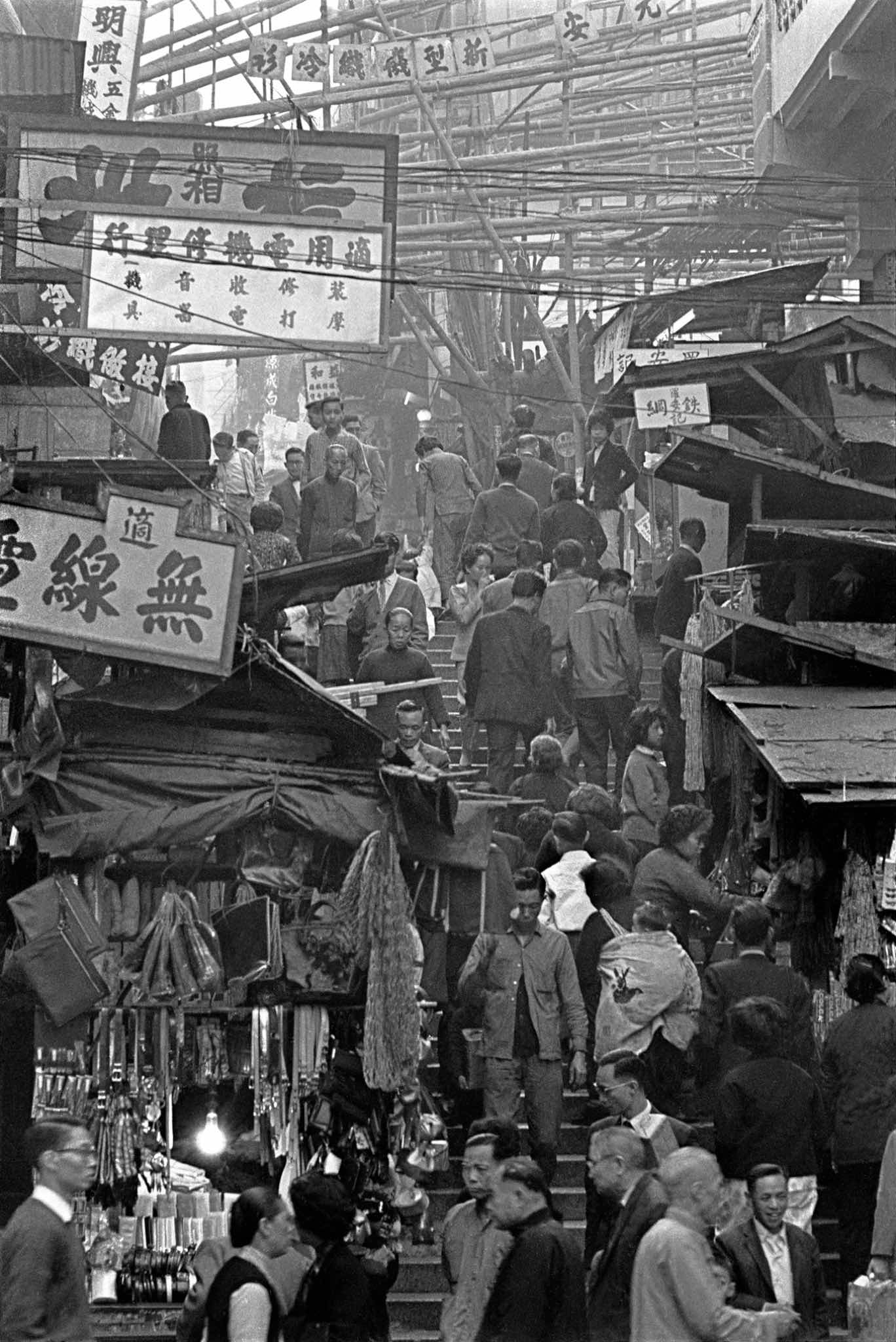HORVATLAND - THE '60s - PHOTOJOURNALISM - WORLD TRIP - HONGKONGGO TO HOME
1963, from Time machine
From the first, Hong Kong made me want to take photos. Everything here is arranged vertically, not just the buildings but also the letters on the hoardings, the two-level tramways, the stepped lanes mounting to the top of Victoria Island: this yields images which are filled from top to bottom and which create a type of composition that I like. Some of the older houses look as if they had been built one on top of the other, with shanty-like structures on their rooftops and, on top of these, yet more washing lines. On some facades, the residents have hooked up covered balconies, which look as if they are about to collapse and on which yet more families are packed along with their furniture and their washing. I took some photos inside one of these buildings. The ceilings are just over six foot high but for the Chinese this still leaves usable space. In one, they had so arranged themselves as to create a mezzanine full of furniture, through which I spied a squatting man at work on his sewing machine. Unlike Indians, they are attached to objects. Except that, due to lack of space, they pile their belongings one on top of the other, thus creating architectural structures of suitcases and shoeboxes, which they continually displace and reconstitute, according to whether they work, cook or sleep in the midst of their possessions. Are they obsessed by a horror vacui? (Like me, with my photographic compositions…) Their time is just as packed as their space: they work 18 hours a day, seven days a week, 362 days a year, without a weekly day of rest or public holidays, outside three days off for the Chinese New Year. They are so busy filling their time that they barely allow themselves the leisure to look up. I ventured out into some shanties in the suburbs, where tourists never go. In India or in Egypt a crowd would immediately have surrounded me. Here, the women carry on with their washing. Even the children don’t have time to spare. I photographed one, who could not have been more than two years old, bearing an even smaller baby on his shoulders, as he walked behind his mother, herself carrying some heavier load. Besides work, the two things that matter are food and gambling. In the evening, certain streets resonate to a sound like machine-gun fire, which turns out to be nothing but mahjong pieces being slapped onto tavern tables. At the ice-cream seller’s, the children don’t just buy an ice: as a bonus, they are allowed to turn the arrow on a roulette wheel, which may win them a second serving. And always, whether it’s roulette, mahjong or slot machines, they apply themselves to the game just as methodically as to their work. They eat their food with the same determination: glued to their bowls, their chopsticks creating an uninterrupted flow between receptacle and mouth. And they eat wherever they happen to be, in the course of any occupation, at any hour, alone or with family, in the workplace, at their stalls or in street taverns.


1963, Hongkong, China (then British colony) for REVUE, street with steps

1963, Hongkong, China (then British colony) for REVUE, street with steps

